|
Vanishing
Horizons Opens at Finlandia |
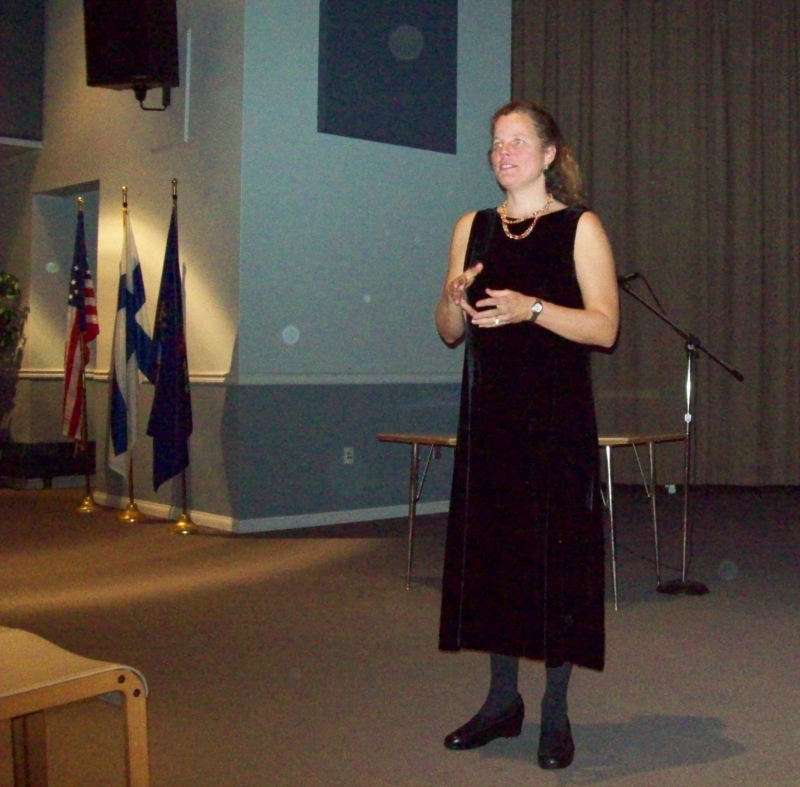 |
| above Carrie Flaspohler introducing
Christine Flavi at the power-point presentation |
HANCOCK - An exhibit by artist Christine
Flavin titled, "Vanishing Horizons: An Interpretation of the
Abandoned Mining Sites of the Upper Peninsula"
is featured at the Finlandia University Gallery,
located in the Finnish American Heritage Center
in Hancock. The exhibit opened October 20th
and will remain open to the public until
November 13th, 2008.
Last night a well attended reception for the
artist took place at the
gallery Christine gave a power-point
presentation to the attendees and described the
stories pertaining to the many mines which she
has photographed.Flavin received a master of fine arts in photography and
printmaking at the University of Iowa. Her work on this
project was supported by a Faculty Research Grant from
Northern Michigan University, where Flavin is an assistant
professor. Her work has been included in solo and group
exhibitions throughout the Midwest, and in Washington and
Missouri. Flavin's work is included in the permanent
collections of The Museum of Contemporary Photography in
Chicago, Illinois, The Suwa Art Museum in Japan, and the
Benham Gallery, Seattle, Washington. |
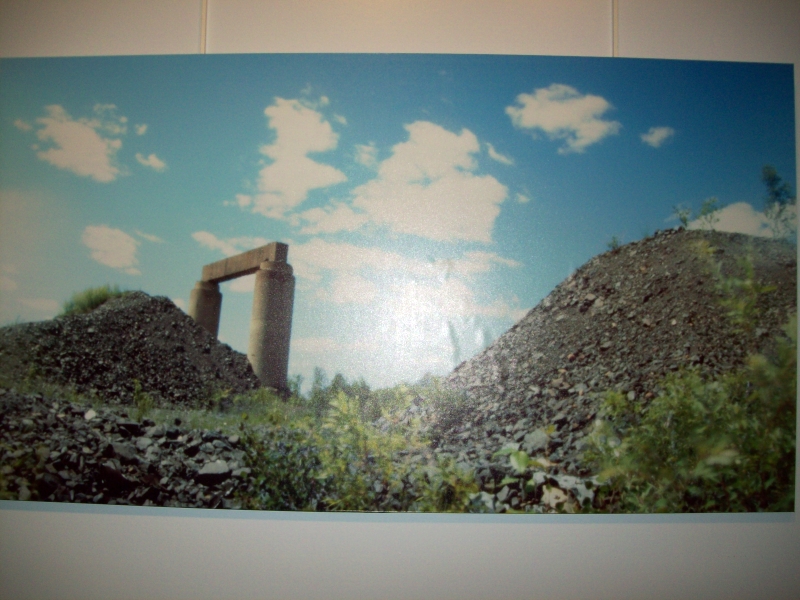 |
|
above - Republic
Mine, Poor Rock 45X24 inches |
| For the past two years Christine Flavin has been researching
the history of and photographing the abandoned iron and
copper mining sites of the Upper Peninsula, along with the
stamp mills and the barren ground they left behind. Her
photos focus on the enormous cultural change spurred by the
technological and millennial transitions the Upper Peninsula
has experienced in the previous decades. |
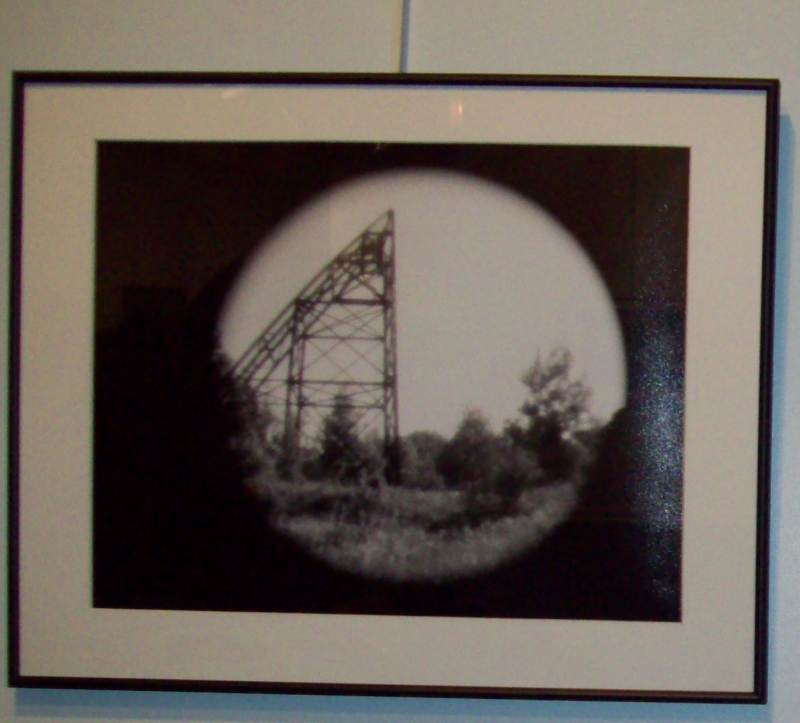 |
|
above - Kearsange
Head 20X16 inches |
| Flavin appreciates the "terrible beauty" of the sites she
photographs. "The pictures are meant to capture the vestiges
of manufacturing and mining," she notes. "Like remnants from
ancient ruins, the remains appear as monuments to a way of
life that has disappeared. These traces of industry are what
are what are left of a lifestyle now lost." |
|
|
| Flavin took the exhibit photos with hand-built, zone plate
and panoramic pinhole cameras - cameras without optical
lenses. Her images are recorded on 4 x 5 black-and-white
photo paper, or on medium format color roll film. The zone
plate images are circular and similar to the Kodak camera
photographs popular in the heyday of the mining industry. |
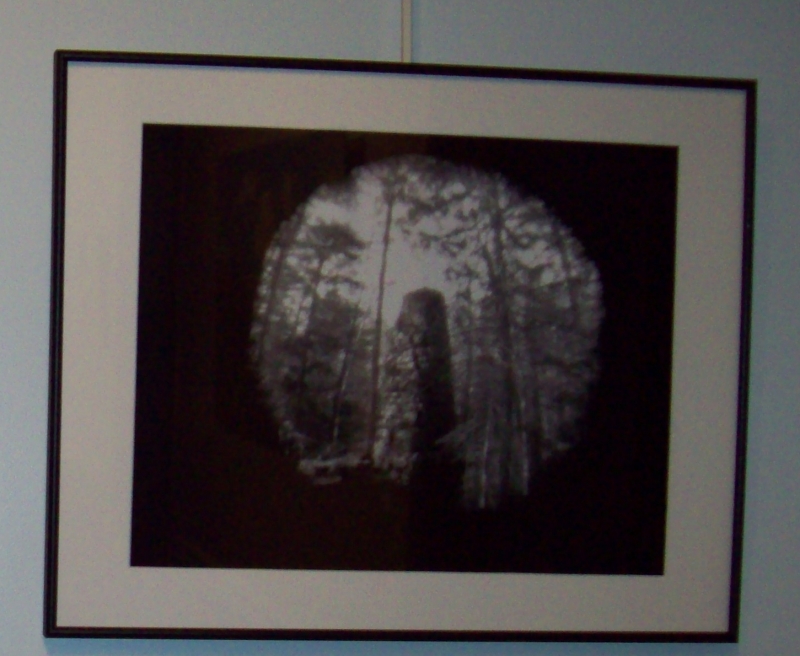 |
|
above - Cliff Mine
No1. 20X16 inch |
| 'The deserted structures float in a frame of black,"
explains Flavin, "engaging the viewer in the sensation of
peeking through an aperture of time at relics from an
ancient civilization." |
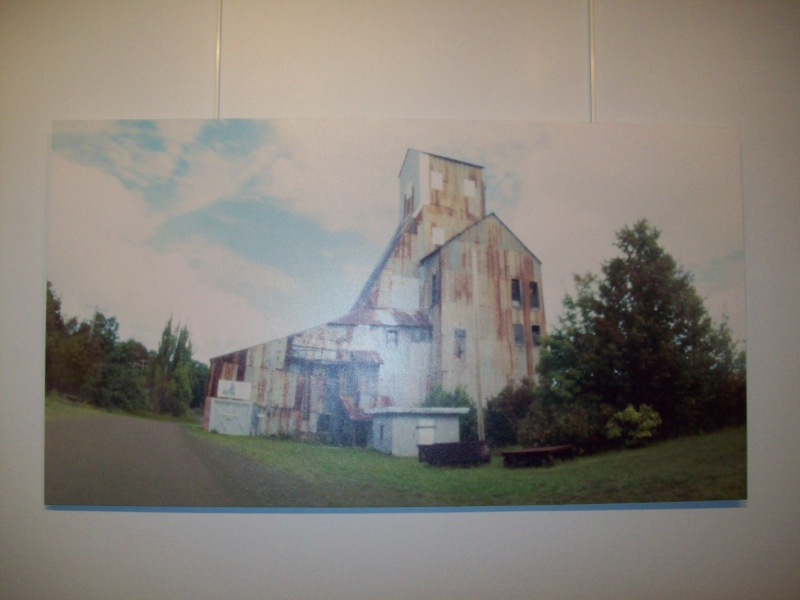 |
|
above - Champion
Shaft House 45X24 inches |
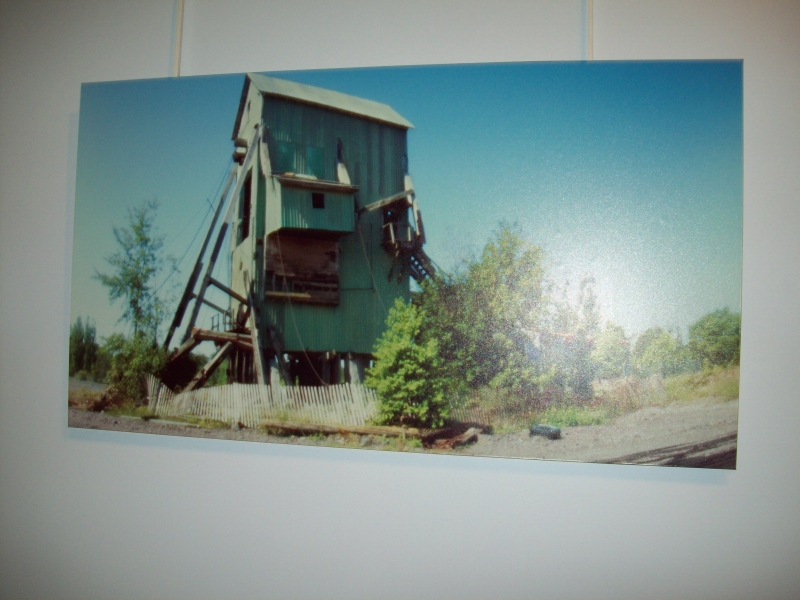 |
|
above - Centennial
Mine #3 Shaft House 34X20 inch |
| The exhibit also features large color murals created with a
panoramic pinhole camera. "Like old WPA murals on the walls
of banks, libraries, and other public spaces," says Flavin,
"these images are a testimony to the labor that was done;
but now the work-spaces are hauntingly empty of human
presence." |
| "These footprints will soon vanish from the horizon .
reclaimed by nature or another wave of industries still to
come," Flavin concludes. "My purpose is the same as the
photographers who made pictures of the mines when they were
in operation. I am simply recording how the landscape
appears today, preserving on film what is rapidly slipping
from our view." |
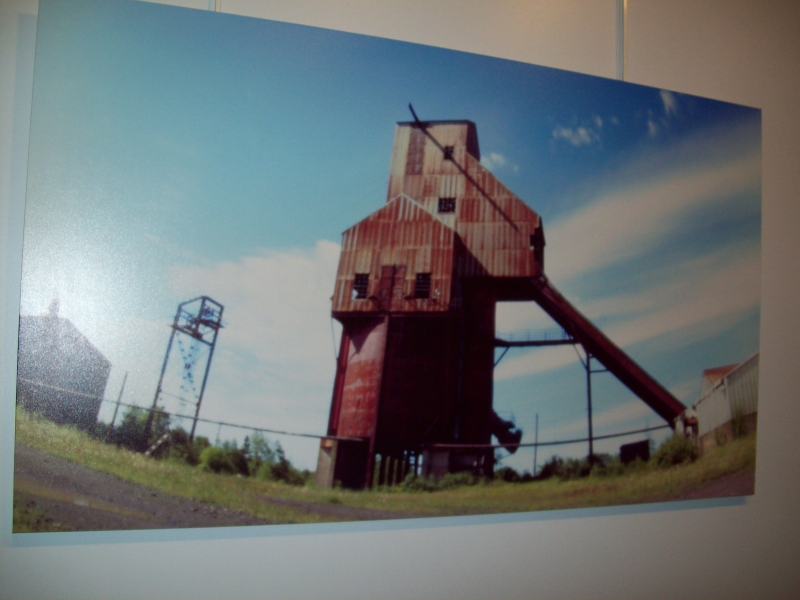 |
|
above - Centennial
Mine #6 Shaft House
45X26 inch |
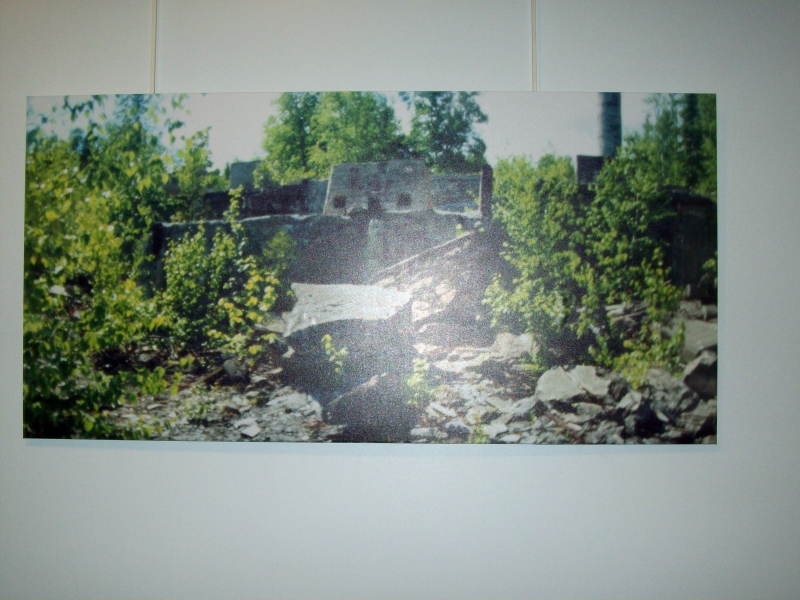 |
|
above - Mohawk
Mill 45X22 inch |
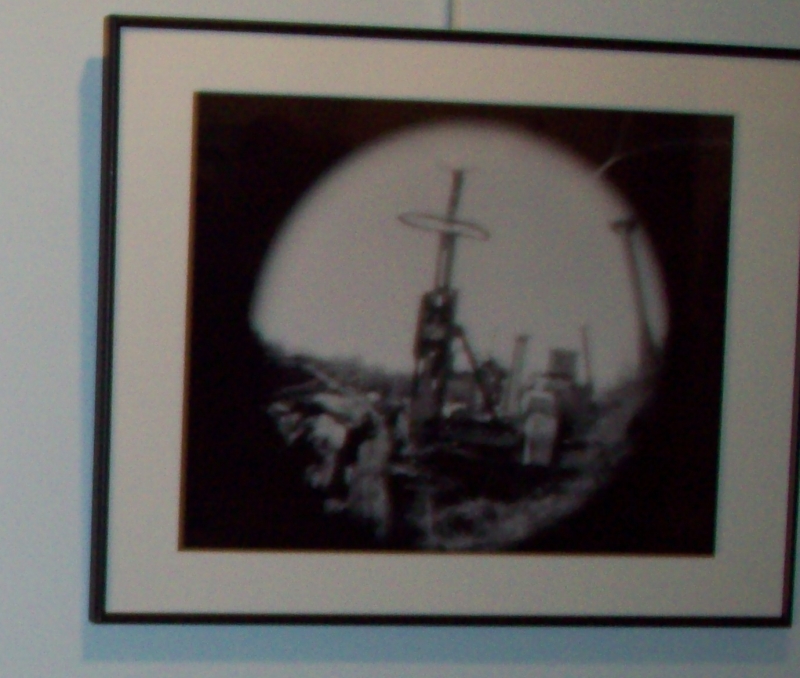 |
|
above - Tracy
Mine Machines 20X16 inch |
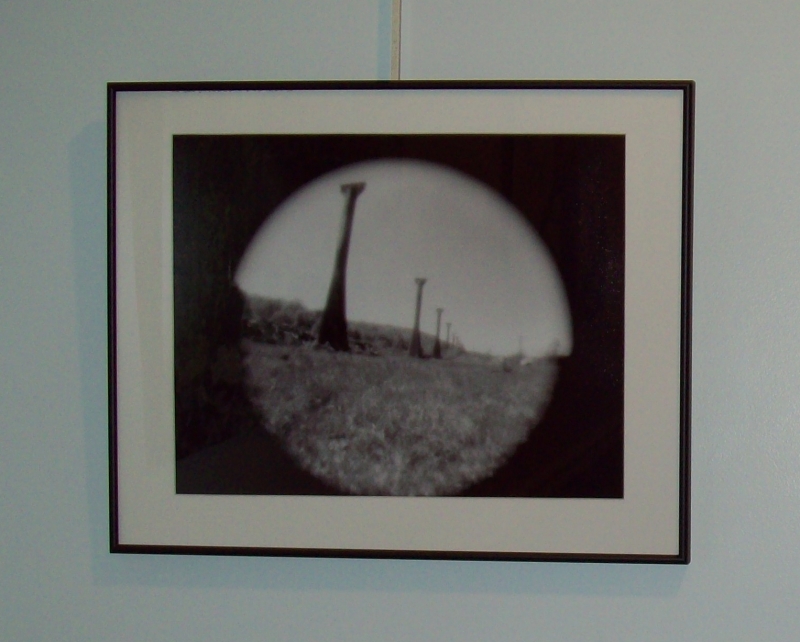 |
|
above - Tracy Mine
Trestle 20X16 inch |
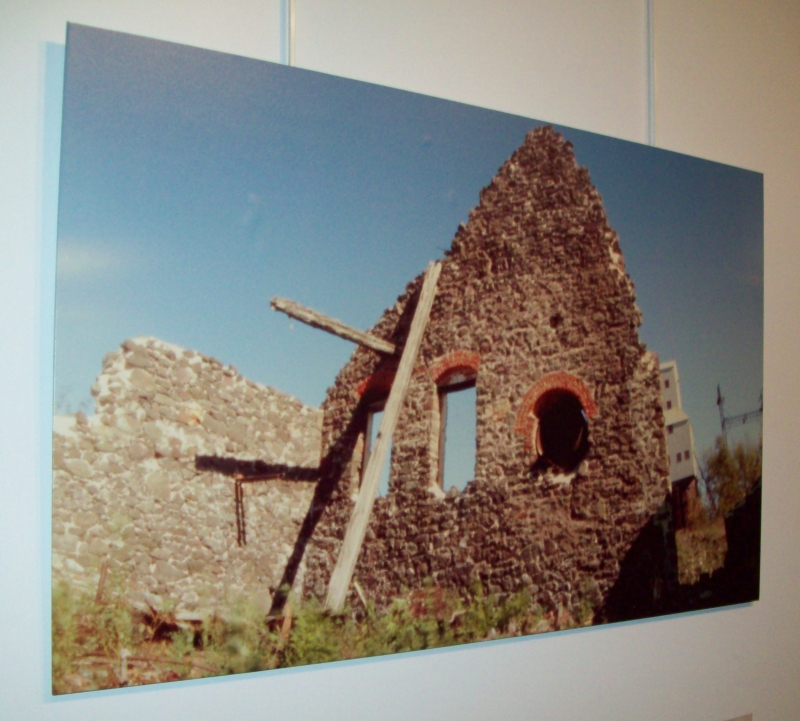 |
|
above - Quincy
Landscape Color Ink Jet 45X27 inch |
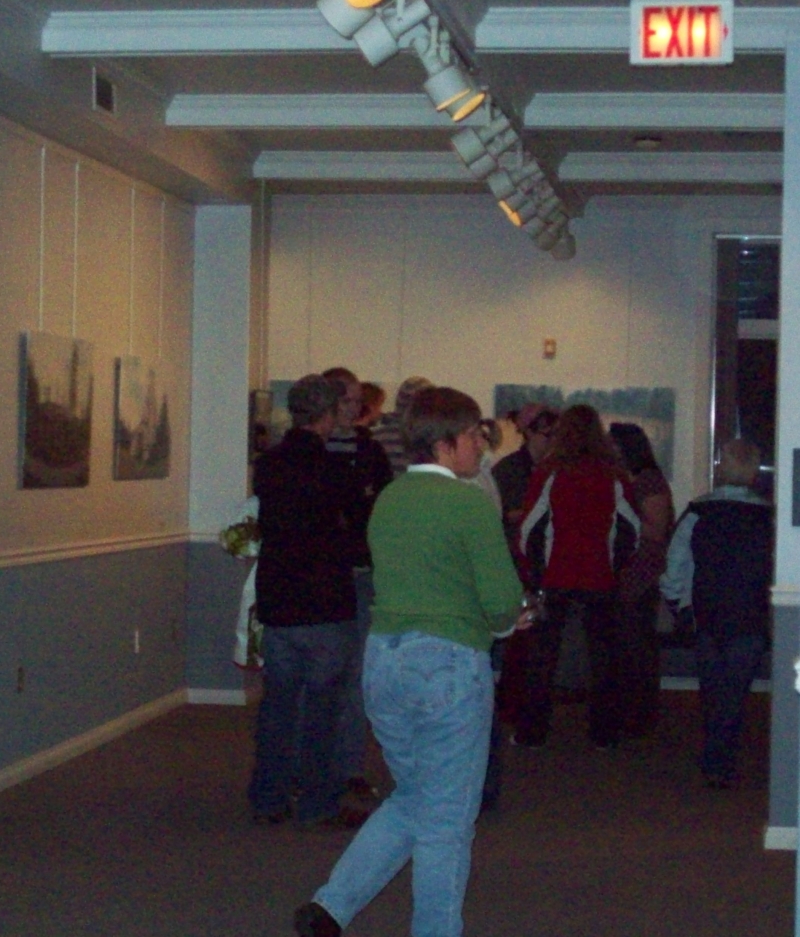 |
| photo above Karen Johnson,
Exec. Director of Communications for Finlandia
U. Karen is responsible for the press releases
and stories we bring you from Finlandia. Karen is
also the publisher/Editor of the fantastic
magazine "The Bridge" |
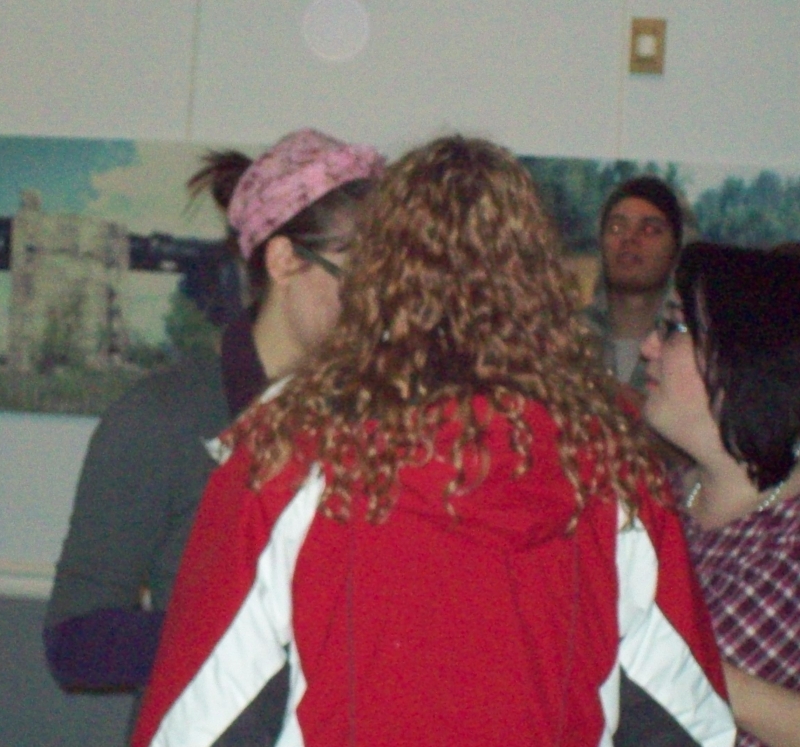 |
| |